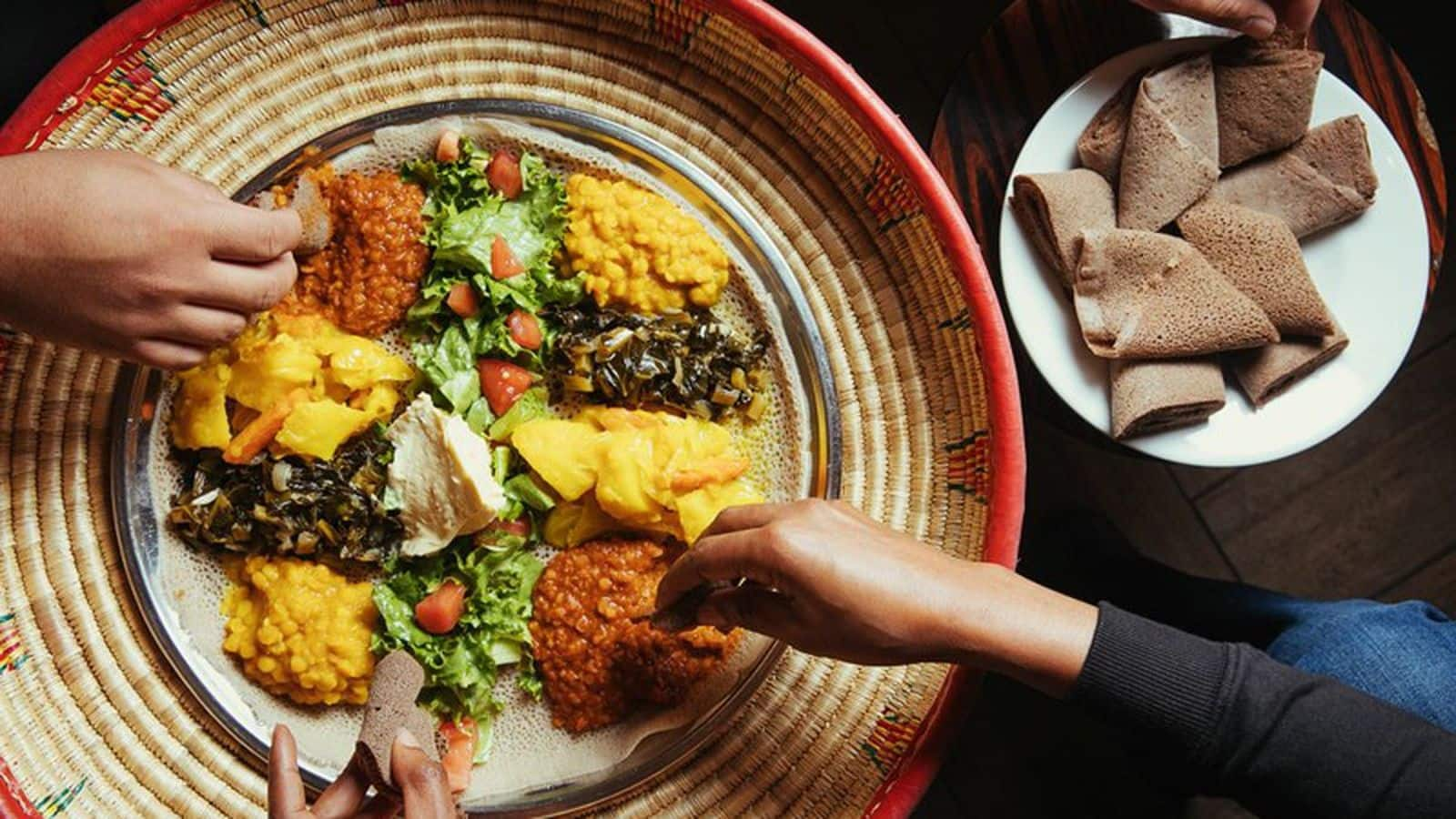
Prepare this Ethiopian injera and stews for a flavorsome day
What's the story
Injera, a sourdough-risen flatbread with a unique spongy texture, is central to Ethiopian cuisine. It comes with vegetarian stews known as "wot" or "wat," offering a rich exploration of flavors. Originating in Ethiopia, injera is both a staple food and a tool for scooping stews. Its preparation is an art form, passed through generations, and integral to the country's cultural heritage. Let's get cooking!
Ingredients list
Gather the following ingredients
To make injera, first mix teff flour with water until smooth. Cover this batter and let it ferment at room temperature for one to three days, a crucial step for the bread's tangy flavor. After fermentation, stir salt into the batter, which should now be thin, much like pancake batter. This consistency is perfect for cooking injera, ensuring it has its characteristic spongy texture.
Step 1
Preparing the injera batter
Combine teff flour and water in a bowl to a smooth consistency. Cover with a cloth, allowing it to ferment at room temperature for one to three days, essential for injera's tangy taste. Post-fermentation, mix in salt. The ready batter should be thin, akin to pancake mix, ideal for cooking injera with its signature spongy texture.
Step 2
Cooking the injera
Warm a nonstick skillet or crepe pan over medium heat. Pour the batter, ensuring it spreads thinly across the surface by swirling the pan. Cook until bubbles form and the edges naturally lift from the pan, eliminating the need to flip. Once ready, remove each injera with care, stacking them on a plate and covering with a clean towel until it's time to serve.
Step 3
Making mixed vegetable stew (Atakilt Wat)
Warm olive oil in a pot over medium heat. Add onions, sauteing until soft. Mix in garlic, ginger, and turmeric, followed by carrots and potatoes, ensuring spices coat the vegetables. Add water to half-cover the vegetables; bring to a boil, then simmer for about 15 minutes until tender but firm, incorporating green beans halfway through the simmering time.
Step 4
Serving suggestions
Traditionally served family-style on large platters: lay down injeras as a base then ladle generous amounts of Atakilt Wat onto them along with any other preferred vegetarian stews or salads you've prepared separately. This allows everyone at the table to scoop servings using pieces torn from injeras themselves—embracing the communal dining ethos integral to an Ethiopian meal experience.